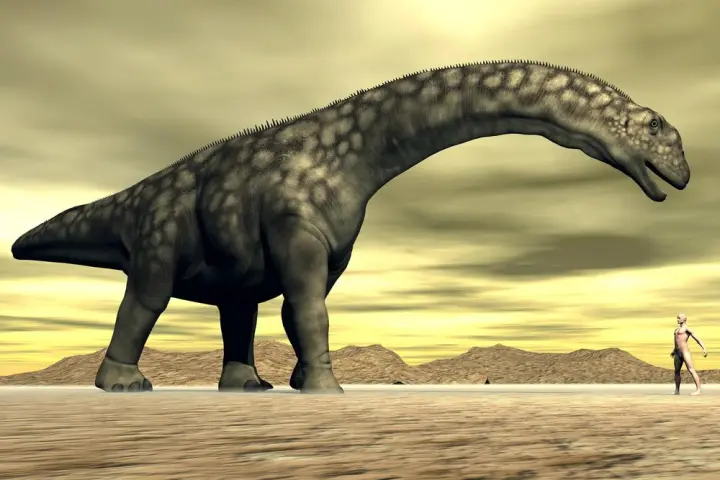
When a group of scientists claimed the size of the world’s biggest dinosaur must have been exaggerated as such a huge creature would never have been able to walk, a research team at the UK’s Manchester University decided to look at the matter more closely.
Using laser-scanning techniques and an advanced computer modeling system, the team was able to accurately recreate Argentinosaurus’s locomotion ability, as well as its walking and running movements, backing up the theory that the dinosaur was indeed 40 meters long and weighed as much as 80 tons.
Admittedly, the 10-second video (below) may resemble something an animation student might knock together in an afternoon, but that would be to misunderstand the huge amount of work that went into its creation. The computer modeling technique did, after all, involve processing power equal to 30,000 desktop computers.
“If you want to work out how dinosaurs walked, the best approach is computer simulation,” team leader Dr. Bill Sellers explained. “This is the only way of bringing together all the different strands of information we have on this dinosaur, so we can reconstruct how it once moved.”
The dinosaur, which if you hadn’t realized takes its name from the country where just a few parts of it were discovered in 1993, walked the Earth around 94 million years ago, with the digital reconstruction revealing that it would’ve moved along at a speed of between 2 and 5 mph.
Dr. Sellers, of the university’s Faculty of Life Sciences, said the research was key in gaining a greater understanding of musculoskeletal systems and could be used in the future development of robots.
“All vertebrates from humans to fish share the same basic muscles, bones and joints,” Dr. Sellers said. “To understand how these [work together], we can compare how they are used in different animals, and the most interesting are often those at extremes.”
Sellers added, “Argentinosaurus is the biggest animal that ever walked on the surface of the Earth and understanding how it did this will tell us a lot about the maximum performance of the vertebrate musculoskeletal system. We need to know more about this to help understand how it functions in ourselves.
“Similarly if we want to build better-legged robots then we need to know more about the mechanics of legs in a whole range of animals and nothing has bigger, more powerful legs than Argentinosaurus.”
Next the team is planning to reconstruct the movements of other dinosaurs, including Triceratops, Brachiosaurus and T. rex.
[Source: Manchester University] [Image: Elenarts / Shutterstock]


